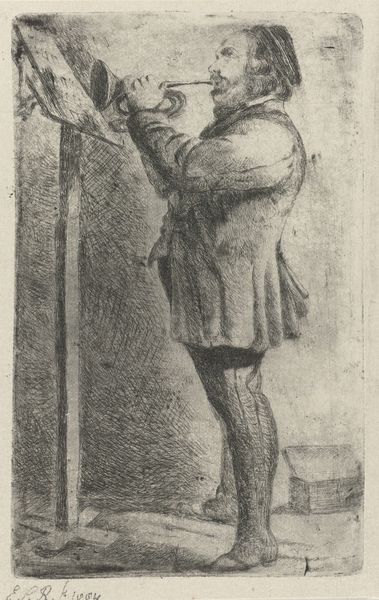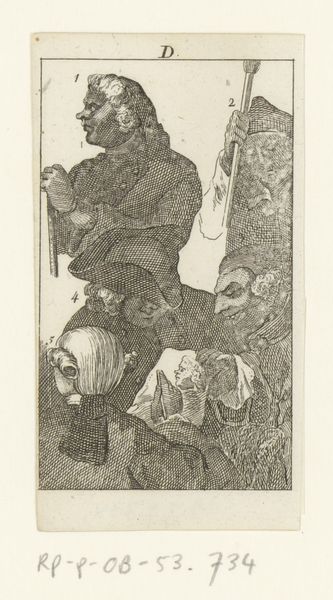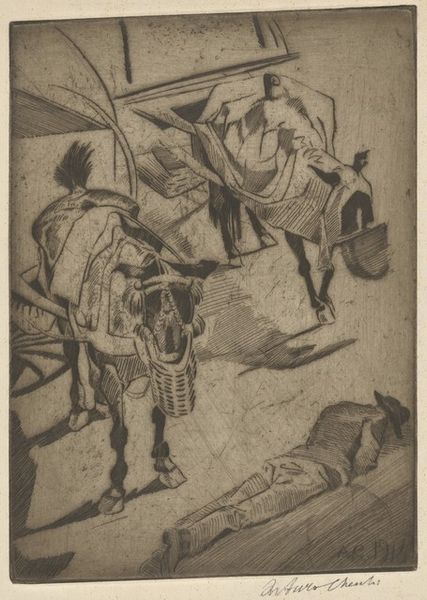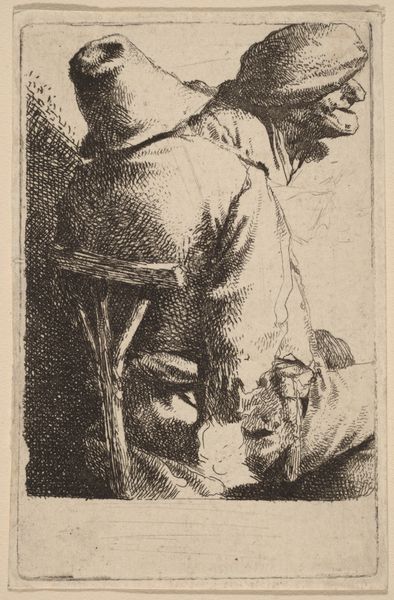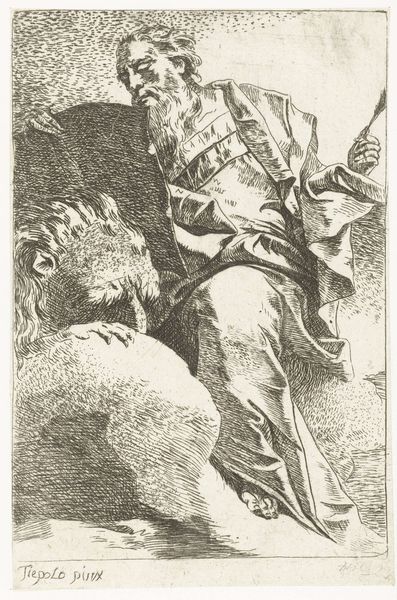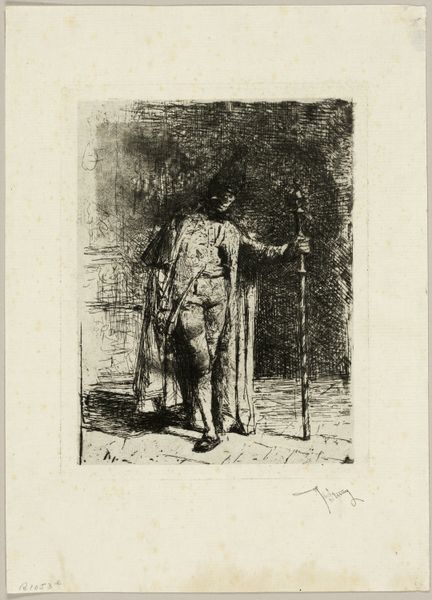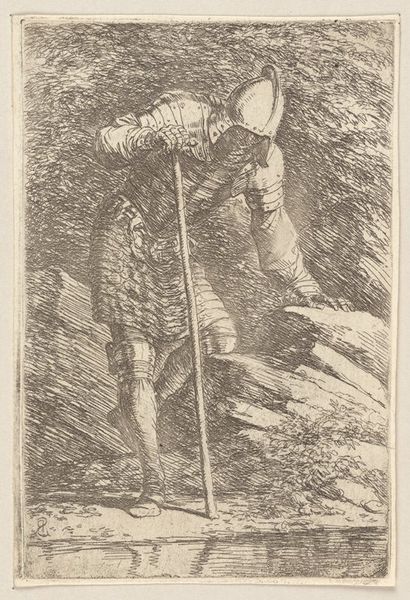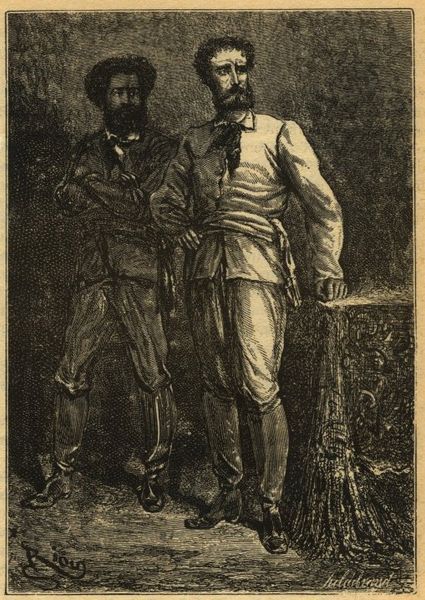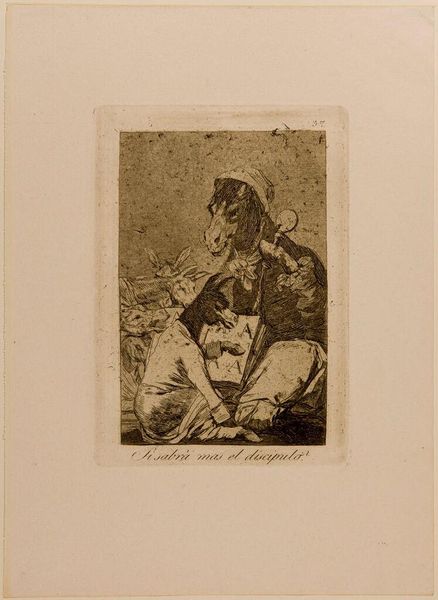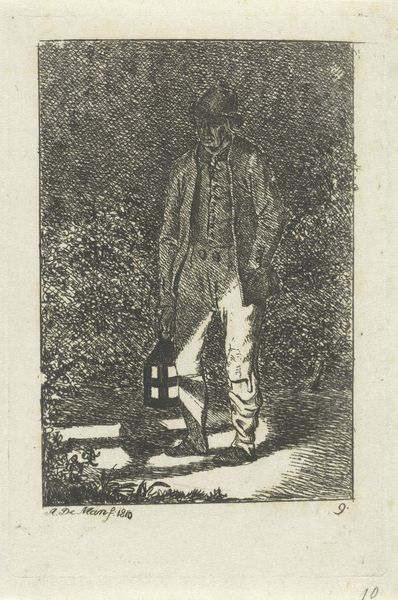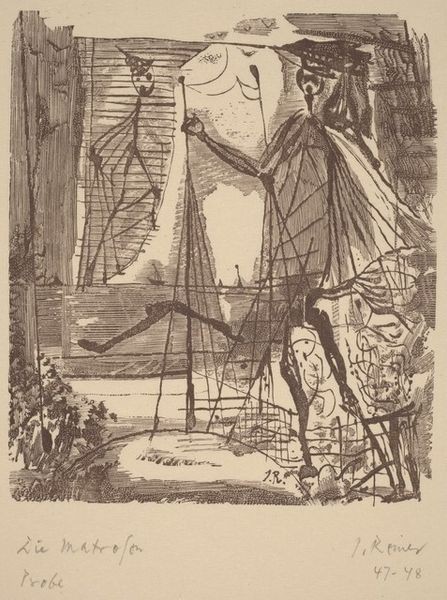
Fotoreproductie van een schilderij door Velázquez, voorstellend een portret van landvoogd Ferdinand van Oostenrijk in jachtkostuum c. 1857 - 1880
0:00
0:00
juanlaurent
Rijksmuseum
photography, gelatin-silver-print
#
portrait
#
photography
#
gelatin-silver-print
#
19th century
#
realism
Dimensions: height 336 mm, width 196 mm
Copyright: Rijks Museum: Open Domain
Editor: Here we have a photograph by Juan Laurent, taken sometime between 1857 and 1880, of Velázquez's portrait of Archduke Ferdinand of Austria in hunting clothes. It's quite striking how photography is used here to document a painting, almost like an early form of art dissemination. What strikes you about this image? Curator: It’s interesting to see this reproductive photograph. The photograph allows this royal portrait to be circulated widely and cheaply, changing its role. Originally, the painting reinforced the power and prestige of the Habsburgs. How does that dynamic shift with the photograph? Does it democratize access, or does it re-contextualize the painting, transforming it into a commodity for a growing middle class eager to consume images of the aristocracy? Editor: That's a great point, about the changing role of the image. Do you think the context in which it was displayed changed how people saw it? Like if this photograph were, say, displayed in someone's home versus a gallery? Curator: Absolutely. Imagine this in someone’s home. The photograph, removed from the direct control of the monarchy or the Prado, becomes a conversation piece. It’s no longer about directly conveying power, but about cultivating a certain taste, a certain sense of cultural capital within the domestic sphere. And this proliferation arguably eroded the exclusivity and aura that surrounded these aristocratic figures. How do you think the mass availability of this photo changed perceptions of the monarchy? Editor: I never thought about it that way. Seeing it reproduced so easily does make the original feel a little less…untouchable, I guess? Curator: Precisely. It shows us how the political meaning of art changes when its accessibility changes, shifting from an emblem of power to something that could be widely owned and understood. Editor: I see how crucial that shift in context is. Thanks for pointing that out!
Comments
No comments
Be the first to comment and join the conversation on the ultimate creative platform.
